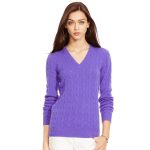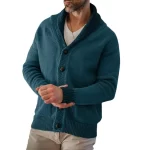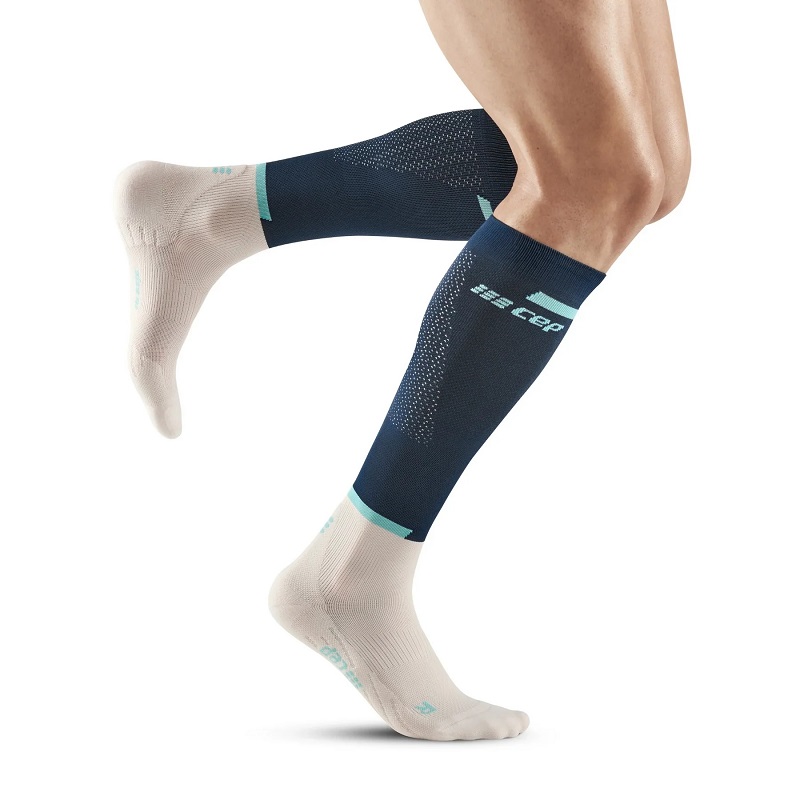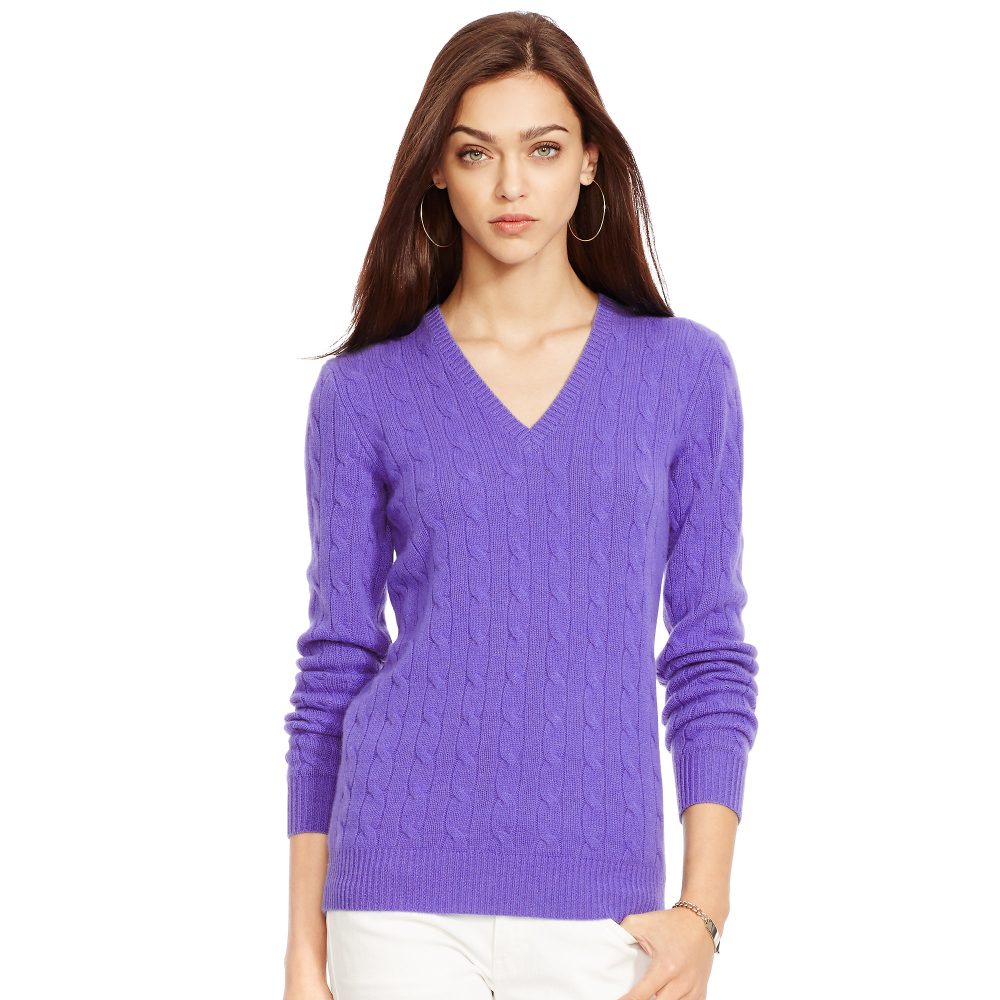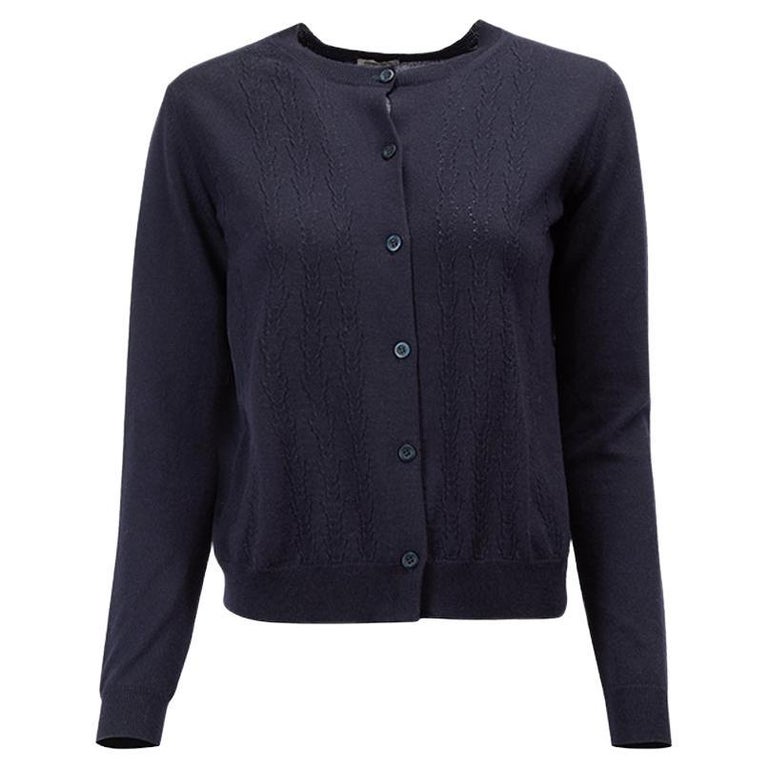Benefits of Compression Socks for Runners
Compression socks for running aren’t just a trend. They offer real benefits for athletes. Here’s how they help you as a runner:
- Improve Blood Circulation: Compression socks for running boost blood flow. This can help with better oxygen delivery to muscles.
- Reduce Muscle Soreness: Wearing compression socks during long runs can lessen muscle pain and fatigue.
- Decrease Swelling: If you’ve ever noticed swollen feet after a run, compression socks can help reduce this.
- Support Recovery: Post-run recovery is crucial. Compression socks assist in this, speeding up healing and reducing soreness.
- Enhance Performance: By improving circulation and muscle support, these socks can help improve your overall running performance.
- Prevent Injuries: With better muscle support, compression socks can also play a role in preventing common running injuries.
- Climate Control: Compression socks come in materials that help keep your feet warm in winter and cool in summer.
By incorporating compression socks for running into your gear, you can enjoy these benefits and possibly see an improvement in your running experience. Whether you’re a casual jogger or a competitive racer, consider giving them a try to boost your performance and comfort.
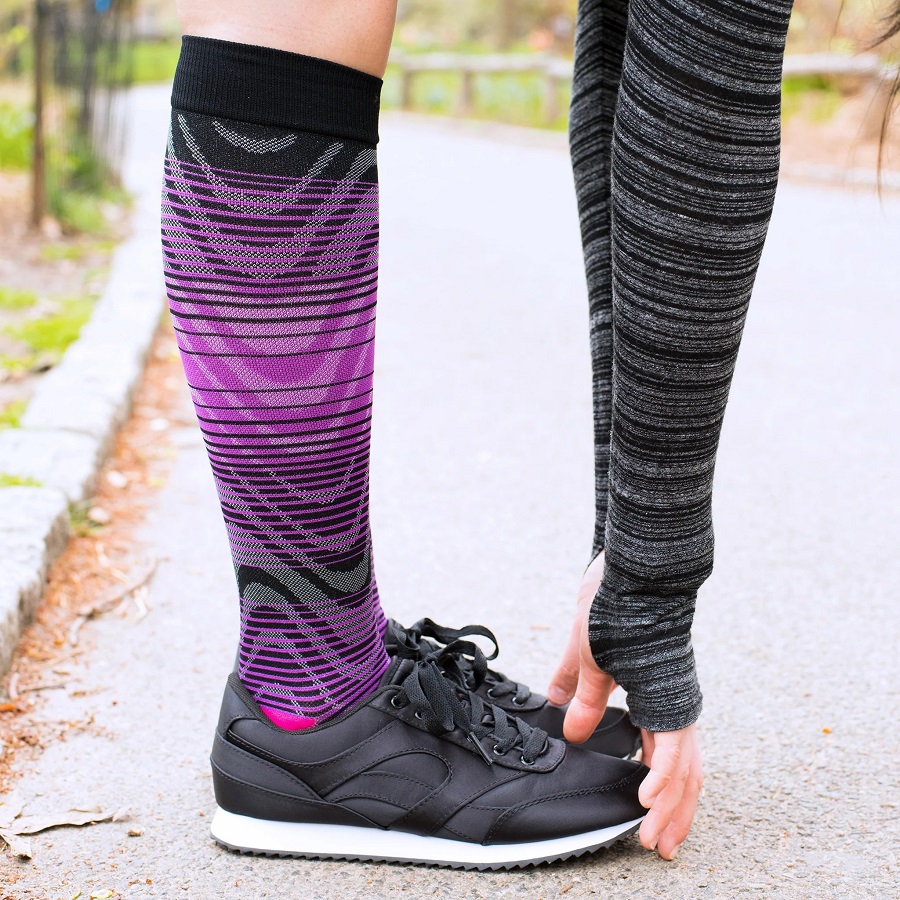
How Compression Socks Work to Improve Performance
Compression socks for running do more than just improve your outfit. They have real, science-backed benefits that enhance athletic performance. Let’s explore how they work.
- Enhance Circulation: By gently squeezing the legs, these socks promote blood to flow back toward the heart more efficiently. This action fights gravity and boosts circulation.
- Support Muscles: They reduce muscle vibration during running. This can delay muscle fatigue and increase your running endurance.
- Regulate Temperature: The materials in compression socks help to maintain leg temperature. This is vital for muscle function and can prevent overheating or overcooling.
- Minimize Injury Risk: Better muscle support means less stress on your lower leg. This can lead to fewer injuries like shin splints or calf strains.
Compression socks for running are not just a simple accessory. They are tools engineered to optimize your body’s performance. By enhancing blood flow, supporting muscles, regulating temperatures, and reducing injury risks, they contribute to a more efficient and effective run. Adding these socks to your running gear can make a notable difference in your performance and endurance.
Choosing the Right Compression Socks for Running
Choosing the right compression socks for running is crucial for reaping the full benefits. Here are factors you should consider:
- Fit and Size: Ensure the socks fit well. They should be snug but not too tight.
- Compression Level: The level of compression varies. Some are mild while others are strong. Match this to your needs.
- Material: Look for breathable, moisture-wicking fabrics to keep you comfortable during runs.
- Length: They come in different lengths. Some cover the calf while others reach the knee. Choose based on your preference and needs.
- Design: While function is key, you can also pick a design that suits your style.
- Durability: High-quality socks last longer. They resist wear and tear from regular use.
- Brand Reputation: Consider brands with positive reviews from runners.
Remember, not all compression socks for running are the same. It’s worth taking the time to find a pair that offers the right balance of comfort, support, and style for your running routine.
Compression Socks and Recovery: Speeding Up the Healing Process
Compression socks for running not only enhance performance but also play a key role in recovery. After intense runs, here’s how they help speed up the healing process:
- Reduce Delayed Onset Muscle Soreness (DOMS): Wearing compression socks post-run can ease pain and tenderness.
- Boost Recovery Blood Flow: These socks help increase blood circulation, which speeds up muscle repair.
- Control Swelling: By minimizing fluid build-up, they keep swelling in check.
- Supportive Fit: They provide a snug fit that offers muscle support while you rest.
- Easier to Move: With less swelling, your legs feel lighter making it easier to move post-run.
By incorporating compression socks for running into your recovery routine, you can help your body heal faster. You can get back on the track quicker and with less discomfort. From promoting blood flow to reducing muscle soreness, these socks are a post-run recovery essential. Remember to choose the right fit for optimum benefit.
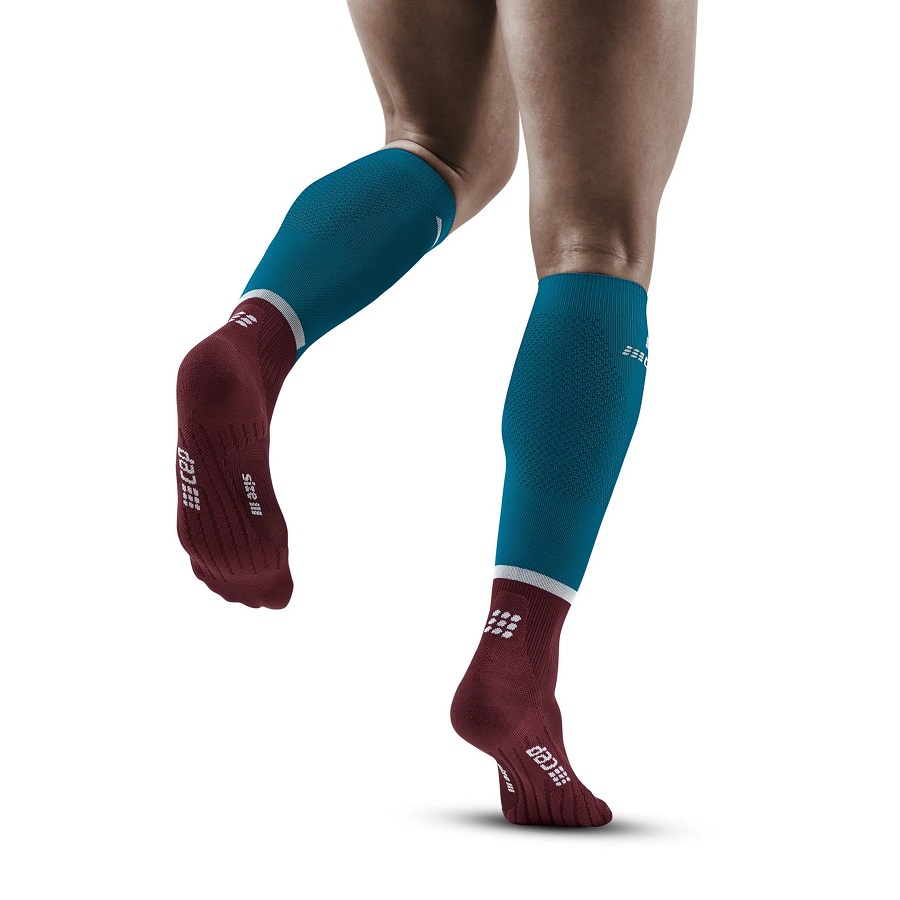
The Science Behind Compression Gear and Athletic Performance
The benefits of compression socks for running stem from a clear scientific basis. Supportive gear like compression socks applies a graduated amount of pressure to the legs. This pressure works to support some critical aspects of physical performance.
- Improved Venous Return: Compression gear promotes the return of blood to the heart. Better venous return boosts overall circulation, vital for endurance and performance.
- Stabilized Muscle Movement: By snugly wrapping the muscles, compression socks reduce unnecessary muscle oscillation. This reduces muscle fatigue and can help in improving your run.
- Oxygenation of Muscles: Enhanced blood flow increases the oxygen supply to muscles. More oxygen means muscles can work more efficiently and for longer periods.
- Lactic Acid Management: Compression wear helps in faster removal of lactic acid from the muscles. By doing so, it delays the onset of muscle soreness.
Athletes wear compression gear not just for the comfort but for these science-backed reasons as well. When your muscles are well-cared for by the right gear, your athletic performance naturally improves. For runners, this translates into better stamina, speed, and recovery time. To maximize these benefits, ensure the compression socks for running you choose have the appropriate level of pressure for your body and running needs.
Addressing Common Myths About Compression Socks for Runners
While compression socks for running have gained popularity, some myths still exist. Let’s debunk a few common misconceptions to clear up any confusion.
- Myth 1: They are only for elite athletes. In fact, runners of all levels can benefit from the improved blood flow and muscle support that these socks provide.
- Myth 2: Compression socks are uncomfortable. When chosen correctly, they should fit snugly without causing discomfort. It’s essential to get the right size and compression level.
- Myth 3: They do not affect performance. Many runners report improved performance due to better circulation and reduced muscle fatigue. This makes the case for their effectiveness quite strong.
- Myth 4: You can wear them all the time. While beneficial, they’re best used during runs and recovery times. Wearing them constantly could be counterproductive.
- Myth 5: Compression socks are the same as regular socks. These are special socks designed with specific materials and technology to apply graduated pressure.
- Myth 6: They’ll make your legs too hot. Many compression socks for running are made with breathable, moisture-wicking materials to regulate temperature effectively.
By understanding the facts behind compression socks for running, runners can make informed decisions and enjoy the benefits these socks offer. Remember, personal experience and proper usage are key to gaining the advantages of compression wear.
Integrating Compression Socks into Your Running Routine
Integrating compression socks for running into your routine can maximize your runs. Here’s how to do it effectively.
- Start Gradually: If you’re new to compression socks, start by wearing them on shorter runs. This allows your body to adjust to the feel and support.
- Listen to Your Body: Pay attention to how your legs feel during and after the run. Compression socks should feel comfortable and supportive, not restrictive.
- Use During Recovery: Post-run, wear the socks to aid in recovery. They can reduce soreness and speed up healing when worn after exercise.
- Experiment with Timing: Try wearing compression socks before, during, or after runs. Find the timing that works best for your body and your performance needs.
- Check the Fit Regularly: Ensure your compression socks for running still fit well over time. Socks that become too loose may not provide the necessary benefits.
- Wash with Care: To maintain the quality of your socks, wash them according to the manufacturer’s instructions. Proper care extends their lifespan and effectiveness.
- Combine with Other Gear: Pair compression socks with other running gear, like proper shoes and moisture-wicking clothing, for complete comfort and performance enhancement.
By incorporating these steps into your routine, compression socks become a valuable asset to your running gear, contributing to better performance and quicker recovery.
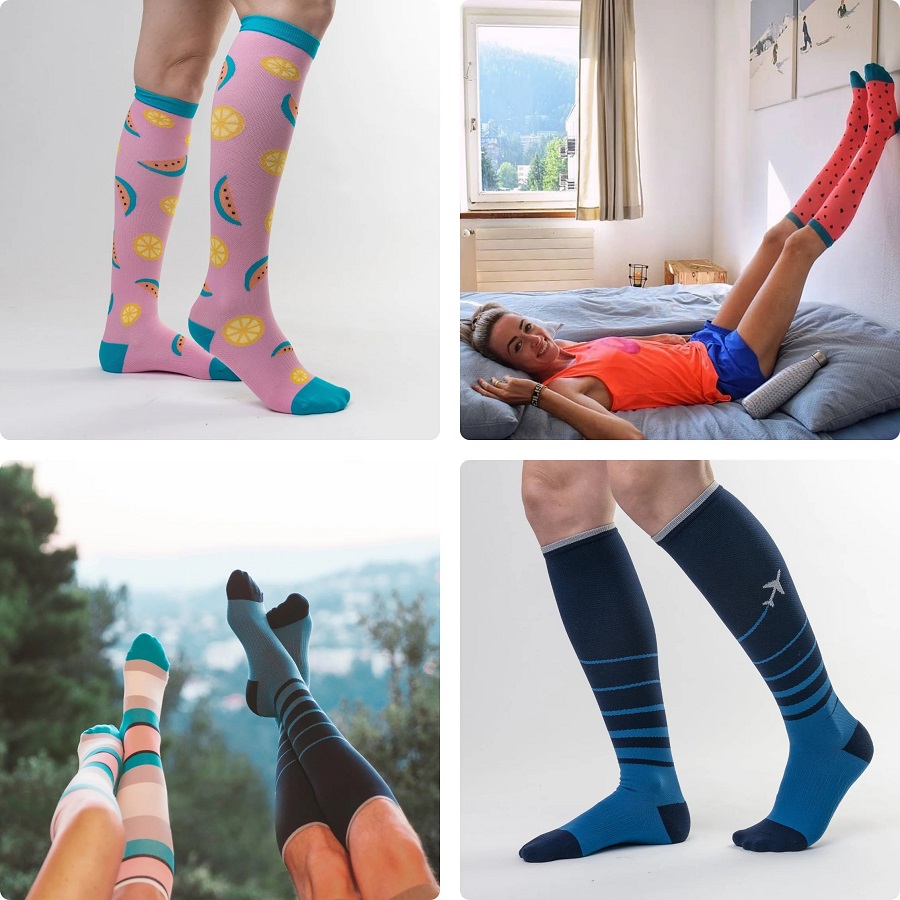
Top-Rated Compression Socks for Runners: A Comparative Review
When choosing the best compression socks for running, a close look at top-rated options can guide you. This comparative review highlights different brands. We evaluate based on fit, compression level, materials, and runner feedback.
- Fit and Comfort: The best compression socks offer a snug fit without chafing. Look for options with no-slip cuffs.
- Compression Effectiveness: Ideal socks provide the right level of pressure, enhancing blood flow and support.
- Material Quality: Your socks should manage moisture and provide durability, even after many washes.
- Runner Experience: Feedback from other runners can be very telling. Pay attention to consensus on performance and comfort.
Popular brands typically feature advanced technology and materials. They also often have a wide range of sizes and styles. Some brands offer graduated compression, which varies pressure along the leg. This can be particularly helpful in boosting circulation.
To conclude, runners should select compression socks that fit well, offer the right compression, are made from quality materials, and come highly recommended by running communities. Remember, individual needs may vary, so what works for one runner may not suit another. Testing different socks during runs and recovery can pinpoint the perfect pair for your needs.


